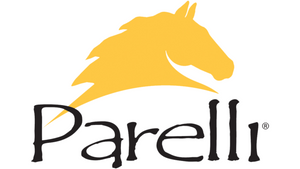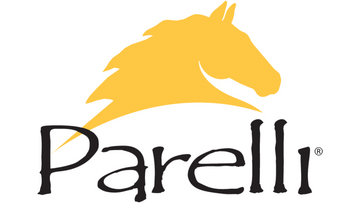
Horses are dynamic creatures that can compete in several different types of sports and competitions. These equestrian events test horse and rider's obedience, strength, speed, and stamina.
English competitions stem from traditional riding styles that originated in Europe. They use an English saddle of varying styles, which is smaller than Western saddles. English competitions include flat work and jumping. The scoring varies considerably based on the specific discipline and competition.
Many Western competitions originated in the American West, although some have roots in the Spanish Vaquero traditions. They feature a larger Western saddle. Finally, while some of these competitions focus on the rider and horse, they also involve other animals. Many Western events are timed, meaning the winner completed the event with the fastest time.
Equine competitions, regardless of the discipline, challenge the relationship and athleticism of horse and rider. The horse and rider are a team facing each challenge. While the horse must obey the rider, the rider must also respond to the horse's body language as they compete.
English Riding Disciplines
English riding competitions challenge the horse and rider to perform various routines, tracks, and courses.
Show Jumping
Show jumping is a type of obstacle course for the rider and horse. In this English riding competition, the rider will guide the horse over a number of jumps in a set order. The course is set up to challenge a horse's agility, obedience, and the rider's ability to steer the horse. Faults are given for missing or dislodging obstacles and for going off course. The runner with the fastest time and fewest faults will win. If there is a tie at the end, the riders will have a jump-off to determine the winner.
Dressage
Dressage is a competition that challenges a horse and rider’s finesse through a choreographed routine. It looks like the rider and horse are dancing. A skilled dressage horse moves with grace. In this competition, the rider guides the horse through a test with complex movements, including trotting, cantering, leg yields, half-passes, and more. Tests get progressively harder as the horse and rider advance. Training level tests include simple movements and walk/trot transitions. Grand Prix, which is one of the highest levels, includes movements such as piaffe, single stride lead changes, and move. Judges score each movement, and the horse with the highest score wins. Higher levels also offer musical freestyle competitions where the pair choreograph a routine ridden to music.
Cross-Country
Cross-country is a type of endurance race. In this competition, the horse and rider will navigate through a designed trail with various natural obstacles. You will need varied terrain, hills, water, and trees. Overall, this competition challenges a horse's endurance and a rider's ability to work with the horse. The rider with the fastest time will win.
Eventing
Eventing is a triathlon for the horse and rider. It combines the challenges of show jumping, dressage, and cross-country that were highlighted above. The total scores for each competition are totaled, and the rider with the highest score wins.
Hunter-Jumper Competitions
Hunter-jumper competitions are similar to show jumping. Hunter competitions have their roots in the traditional English hunt and are judged subjectively based on the qualities and style required for a successful hunt horse. Jumper classes are scored objectively based on time with penalties counted against the pair for errors such as knocking down a rail.
Polo
Polo is a team sport that is played on horseback. Each rider has a long mallet in which they hit a ball into the opposing team's goalposts. Players use their horses and the mallets to play both offense and defense. The team with the highest score wins.
Saddle Seat
Saddle seat is a competition in which the horse makes a high-stepping gait. In this competition, the rider and horse will move at different gaits. The rider with the highest score wins.
Western Riding Disciplines
Western riding competitions stemmed from the work of the cowboy in the American West and the Spanish Vaquero. Cowboys often needed to work with cattle and other herds in the open range. These competitions involved racing in tight areas, chasing animals, and working the herd.
Rodeo
Rodeo is incredibly popular particularly throughout the Southern and Western United States. Rodeo is an umbrella term to include a whole list of other competitions, including:
-
Bull riding
-
Bronc riding
-
Steer wrestling
-
Roping
-
Barrel Racing, and many more events.
These events challenge the bravery and strength of the horse and rider. These competitions will involve a rider and horse team but are largely focused on the skills of the rider. Winners are usually determined by the fastest time for each event.
Rodeo is a spectator sport for viewers and participants. It is very popular to go watch an entire rodeo competition to see the cowboys and cowgirls try their hand at the different events.
Barrel Racing
Barrel racing is a competition often associated with the rodeo. It involves a horse and rider racing around three barrels set in a cloverleaf pattern. Riders need to ride the shortest route around the barrels without knocking them over. The competition is won or lost based on the horse's speed, agility, and obedience. The rider is challenged to navigate the course at high speeds. Overall, the fastest time wins.
Reining
Reining is in a way the Western version of dressage. In a reining competition, the horse and rider will perform a pattern with a variety of different movements and gaits. The team is judged based on precision and responsiveness to commands.
Cutting
Cutting is a competition that truly stems from the work of a cowboy and cow pony. In this competition, the rider and horse must separate an individual cow from the rest of the herd. The horse will make fast, agile movements to hold the cow away from the herd. The competition is judged on the horse's ability to obey commands and anticipate the movements of the cow.
Western Dressage
While English dressage is one of the oldest forms of horse competitions, Western dressage is one of the newest. In Western dressage, riders combine the precision of English dressage with the style of Western riding. The horse and rider perform a routine, including turns, changes in gait, and transitions. Judges score the riders based on difficulty, agility, and precision.







